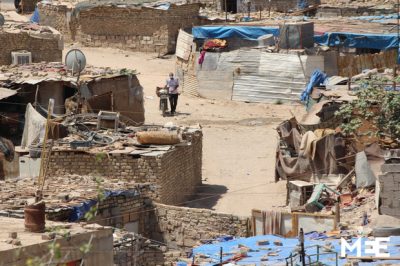Iraq: The Slums of Mesopotamia
The number of slum dwellers is estimated at 3.3 million people living in 522,000 housing units.

It has become obvious that corruption has settled in Iraq since its occupation in 2003. Corruption has multiplied and engulfed all aspects of life.
The emergence of slums in the land of Mesopotamia is but one of the manifestations of the disastrous consequences of occupation and the bottomless corruption of the successive administrations in Iraq. It joins phenomena such as hunger, unemployment and poverty to depict a depressing picture of what has befallen this venerable country.
It is a painful paradox that in the post-2003 period we find Iraqi citizens who have become homeless, living like wild animals in the open while historically Mesopotamia was the perfect haven for man.
Dozens of slums have mushroomed on the outskirts of Baghdad and other cities in Iraq. They emerged from poverty and lack the most basic of amenities. There is no water, no electricity, no sewage and no services. Children in these slums are deprived of education and of life. Most of them eke out a measly daily income or a meagre meal by rummaging through garbage.
Data collected by the Iraqi Ministry of Planning in cooperation with the UN Human Settlements Programme last year show that about 13% of the population of Iraq lives in slums. This percentage is conceivably below the truth because the census did not include the populations of the three provinces of Iraqi Kurdistan (Erbil, Dohuk, Sulaimaniyah) and skipped the provinces of Anbar, Saladin and Nineveh due to the unstable security situations.
The ministry’s data indicated that there were 3,687 slum communities in 12 governorates. With a population of 8 million, Baghdad leads the list with 1,000 slums, followed by the province of Basra (about 3 million inhabitants) with 700 slums. The provinces of Najaf and Karbala close the list with 89 slum areas.
The Ministry of Planning’s survey estimated the number of slum dwellers to be 3.3 million people living in 522,000 housing units. Data also show that 88% of the slums were erected on government land.
Slums started mushrooming around Iraq after 2003. Poor people built houses on abandoned land parcels. Large tracts of government land were seized by party militias, which either built commercial compounds on them or distributed some to the poor in exchange for votes come Election Day.
The problem of slums was exacerbated after the rise of the Islamic State in 2014 with the exodus of thousands of families to big cities and their settling on abandoned tracts of land around them.
There have been deliberate acts of destruction and urban disfigurement in large cities, especially Baghdad. Local authorities have allowed the parcelling of large houses with large yards in the city into small parcels and for buildings to be erected on them.
Authorities also have done nothing to stop buildings being erected on sidewalks and road separators. Houses have even been built on river banks in blatant disregard for the law or civic behaviour. Extensive corruption is everywhere in Iraq.
*
Note to readers: please click the share buttons above. Forward this article to your email lists. Crosspost on your blog site, internet forums. etc.
Featured image is from Middle East Eye

